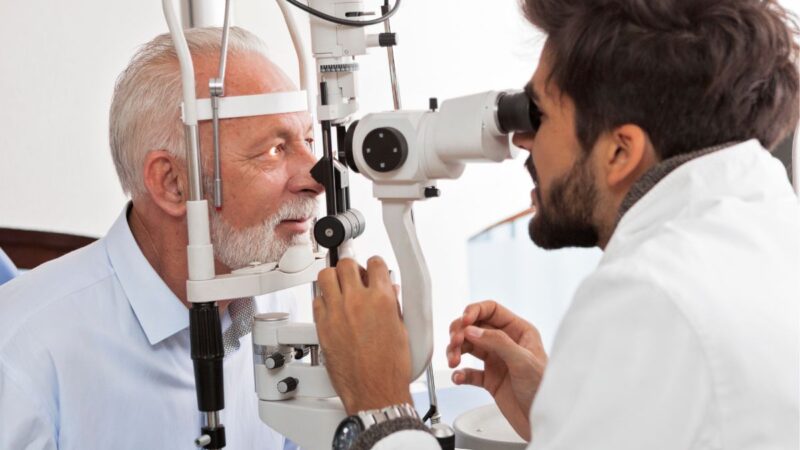Expert Ophthalmologist in Andalusia: Your Vision Is Entitled To the very best
The Advantages And Disadvantages of Different Refractive Surgical Procedures for Improved Eyecare

LASIK Surgery
LASIK surgical procedure is a frequently done refractive treatment that aims to remedy vision issues such as nearsightedness, astigmatism, and farsightedness. This surgical technique has obtained appeal as a result of its effectiveness in supplying clients with clearer vision and decreasing their reliance on glasses or contact lenses. Throughout the treatment, a slim flap is developed on the cornea, and a laser is used to improve the underlying cells, fixing the refractive error. The flap is after that repositioned, enabling fast healing and marginal discomfort for the client.
One of the key advantages of LASIK surgical procedure is the rapid improvement in vision experienced by several clients. It is necessary for individuals taking into consideration LASIK surgical procedure to undergo a comprehensive evaluation by an eye treatment professional to determine if they are appropriate candidates for the treatment.
PRK Procedure
The PRK procedure, also known as Photorefractive Keratectomy, is a type of refractive surgical procedure that aims to fix vision problems similar to LASIK surgical treatment. Unlike LASIK, which involves developing a flap in the cornea, PRK functions on the surface layer of the cornea.
Among the advantages of PRK over LASIK is that it removes the danger of flap-related difficulties because no flap is created throughout the surgery. This can be beneficial for people with thin corneas or those included in get in touch with sports where eye trauma is a possibility. The healing time for PRK is commonly much longer contrasted to LASIK, as the outer layer of the cornea needs time to restore after the treatment. In spite of the longer recuperation duration, PRK can be an ideal alternative for people looking for vision adjustment surgical procedure.
SMILE Surgical Procedure
An advanced refractive surgical procedure strategy getting popularity in the area of ophthalmology is SMILE Surgical procedure. Tiny Cut Lenticule Removal (SMILE) is a minimally intrusive procedure that deals with vision by reshaping the cornea using a femtosecond laser. Unlike typical LASIK surgical treatment, SMILE Surgery entails developing a small incision in the cornea to extract a lenticule, which causes much less disturbance to the corneal framework and potentially faster recovery times.
Among the key advantages of SMILE Surgical treatment is its capacity to deal with myopia (nearsightedness) and astigmatism with high precision, causing excellent aesthetic outcomes for clients. The minimally intrusive nature of the treatment likewise reduces the threat of issues such as dry eye disorder, making it a positive option for people seeking refractive surgery.

LASEK Technique
Having explored the benefits and considerations of SMILE Surgical treatment, another significant refractive surgical procedure strategy worth examining is the LASEK Method. LASEK, which stands for Laser-Assisted Subepithelial Keratectomy, is a type of laser eye surgical procedure that aims to deal with refractive errors such as nearsightedness (nearsightedness), hyperopia (farsightedness), and astigmatism.
Unlike LASIK, LASEK does not involve producing a corneal flap. Instead, during a LASEK procedure, the surgeon uses a watered down alcohol option to loosen the thin external layer of the cornea, recognized as the epithelium.
Among the primary benefits of LASEK is that it can be appropriate for people with thin corneas that may not be good prospects for LASIK. Furthermore, LASEK generally leads to minimal post-operative pain and a quicker healing time compared to PRK. Nonetheless, the visual recuperation procedure with LASEK may be a little longer than with LASIK.
Implantable Call Lenses
Implantable Call Lenses supply a long-term vision correction service for individuals seeking an option to conventional call lenses or glasses. These lenses, likewise referred to as phakic intraocular lenses, are surgically placed right into the eye to deal with refractive mistakes such as nearsightedness (nearsightedness), hyperopia (farsightedness), and astigmatism. neurologist Andalusia. Unlike traditional call lenses that sit on the surface of the eye, implantable call lenses work within the eye itself, providing clear vision without the need for day-to-day upkeep or removal
One of the vital advantages of implantable contact lenses is their durability. Once put, they can continue to be in the eye indefinitely, supplying stable and consistent vision correction. Furthermore, these lenses can be an exceptional alternative for people that are not excellent candidates for laser eye surgery or who choose a relatively easy to fix vision improvement treatment.
Nevertheless, implantable contact lenses do carry some dangers, consisting of the potential for cataracts or boosted eye pressure. It is essential for people considering this alternative he has a good point to talk to an eye care specialist to establish if implantable contact lenses are the ideal selection for their details requirements and eye health and wellness.
Verdict
In conclusion, each kind of refractive surgical procedure has its own advantages and drawbacks. LASIK surgery is preferred for its fast healing time, while PRK treatment might be suitable for individuals with slim corneas.

In General, SMILE Surgery provides an encouraging option for individuals looking to boost their vision with refractive surgery.